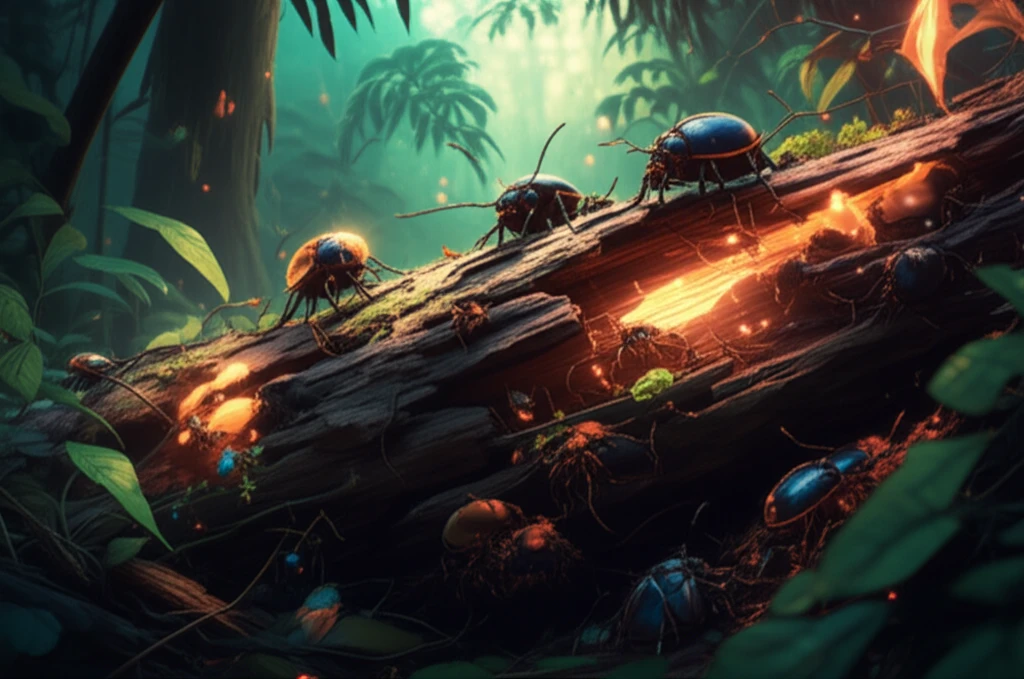
Wood-Eating Beetles: Nature's Unsung Recyclers and What They Teach Us About Forest Health
"Discover the fascinating world of Passalidae beetles and their crucial role in breaking down wood, enriching soil, and maintaining a thriving forest ecosystem. Learn how their presence—or absence—can indicate the health of our planet's most vital habitats."
When a tree falls in the forest, it's not just the sound that echoes through the woods, but a silent transformation begins. While some might see only decay, nature sees opportunity. Among the first responders in this process are wood-degrading insects, with beetles of the family Passalidae playing a particularly crucial role.
These beetles, often overlooked, are nature's recyclers, tirelessly breaking down tough wood fibers and returning vital nutrients to the soil. Their work supports a cascade of life, from the smallest fungi to the largest trees. Understanding their habits and habitats is essential for grasping the intricate workings of a healthy forest.
Recent research has shed light on the specific types of Passalidae beetles that thrive on decaying trunks of Scleronema micranthum, a common tree in the Amazon rainforest. This research not only identifies these key species but also highlights their sensitivity to the stage of wood decay, making them valuable indicators of forest health.
Why Study Wood-Eating Beetles? Understanding Nature's Recycling Crew

Wood-eating beetles, or xylophagous insects, aren't just pests; they're essential components of forest ecosystems. These beetles, including the Passalidae family, are crucial in the decomposition of woody material, a process vital for nutrient cycling. By breaking down dead wood, they release nutrients that enrich the soil and support new plant growth.
- Nutrient Cycling: Passalids break down tough wood fibers, releasing nutrients back into the soil.
- Habitat Creation: Their tunnels and galleries create habitats for other insects and organisms.
- Indicator Species: Their presence and diversity reflect the overall health of the forest ecosystem.
- Ecosystem Engineers: These beetles physically alter the wood structure, facilitating further decomposition by fungi and bacteria.
Protecting Our Forests by Understanding the Small Things
The next time you walk through a forest, take a moment to appreciate the silent workers beneath the bark of decaying trees. Wood-eating beetles, like the Passalidae, are essential for the health and vitality of our planet's most important ecosystems. By understanding their role and protecting their habitats, we can ensure the continued health and resilience of our forests for generations to come.
